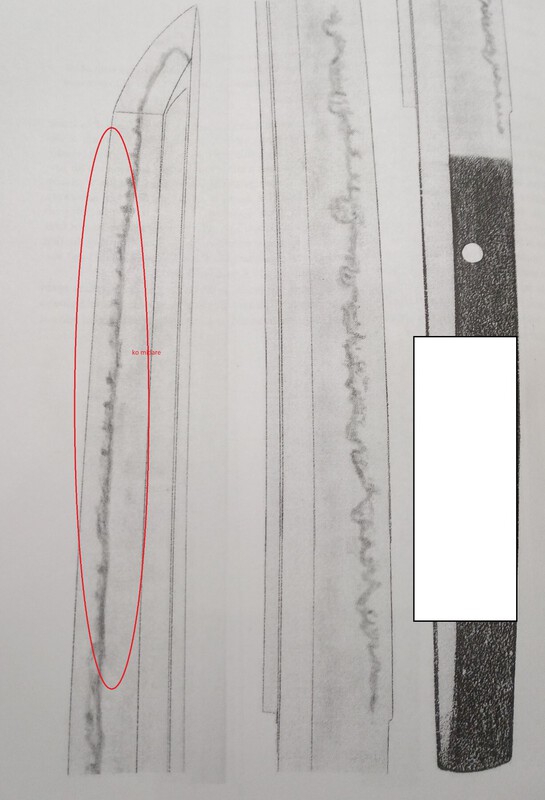
Jacques
Members-
Posts
4,429 -
Joined
-
Days Won
5
Content Type
Profiles
Forums
Events
Store
Downloads
Gallery
Everything posted by Jacques
-
Brano Sure ?
-
So what? Is it written midareba 乱刃 ? No. Once more midareba is not ko-midare which is a kind of hamon like Gunome, notare etc. Last words on this subjetc i would say / MIdareba 乱刃 : irregular hamon. All hamon excepted suguha can be midareba.
-
-
Just false Sugu-O-notare, should be written: suguha ni notare majiri (suguha mixed with notare) Sugu-komidare should be written suguha ni ko-midare majiri.
-
It's written hamon wa ko-midare 小乱れ not hamon wa midareba 乱刃. Is that so hard to understand?
-
Juyo setsumei for example, I feel like I'm talking about the greenhouse effect with people who don't even know the law of perfect gases or as if a painting expert were to tell me about Manet's technique when I know absolutely nothing about painting. .
-
Can you read Japanese? Find me a single description in Japanese of a hamon beginning with 乱刃 midareba. Nagayama alludes to it only in the lexicon at the end of his book, and the term is misunderstood and has become a misuse of language until I am proven wrong by official sources. Gunome (互の目) I know what it is, gunome midare (互の目乱れ) too, but just midare (乱れ) no. False.
-
What did you do? When you confuse ko-midare 小乱れ, O-midare 大乱れ and midareba 乱刃 , you keep quiet. O-midare and Ko-midare are both midare but are not the same thing.
-
Yes, earth is flat.
-
-
Answer by the NBTHK (I wonder where the specialists, who can judge a hamon based on bad photos, are.) Last words about Midareba, please check Nagayama's book chapter: attribution on the hamon, page 101 onwards
-
Probably gimei (the ji Kuni should be more rectangular); but it's not the badest one i've seen.
-
At least try to give the number of hamon types on this sword.
-
Although my wife is a good painter, I know nothing about painting.
-
In the meantime, you'd be better off trying to describe the Hamon I've suggested, without a book or the Internet of course. It's at the foot of the wall that you see the mason
-
OK... Small regular Gunome are called DOEI BA; What does it mean ?
-
-
乱刃 Midareba. Can some one giving a clear definition of what it means ?
-
Tchat GPT ? I asked it to tell to me when i've discovered America. Answer was :"Jacques D. discovered America in 1492).
-
乱刃 (midareba) is not 小乱れ (ko-mIdare); Ko-midare is a kind of hamon, it's a deformed suguha, often found in ko-Bizen
-
Jussi, I'm going to try one last time to make you understand that midareba is not a hamon name. Here's a tachi by Rai Kunitoshi that can be classed as midareba, take a good look at the NBTHK's description of hamon (translation Markus Sesko). Now, you can do what you want with it, it's not my problem. Answer monday
-
Nataniel@ Once again, Midareba is not the name of a hamon, but a characteristic common to all hamons. ps always beware of interpretations when translating The second thing to look at is what elements make up the hamon. exercise: could you describe the hamon's components (the name of the smith is not what you have to look for)
-
I'll come back to the midare (ko) later. The first thing to look for is the basis of the hamon = what is it based on? A suguha, a Notare, a Gunome? The base of the hamon will give us an indication towards the den (I'm talking about koto blades). What are we looking for next (I still haven't broached the subject of nie and nioi)?
-
I would love to see a Japanese description of a hamon saying only 刃文 乱れ. I've seen 互の目乱れ or 丁子乱れ but 乱れ never . Unitl i'm proven wrong midareba is not a name of a hamon













